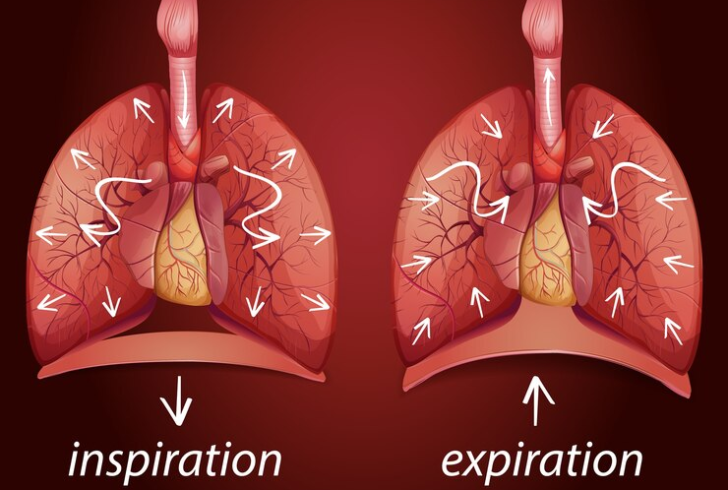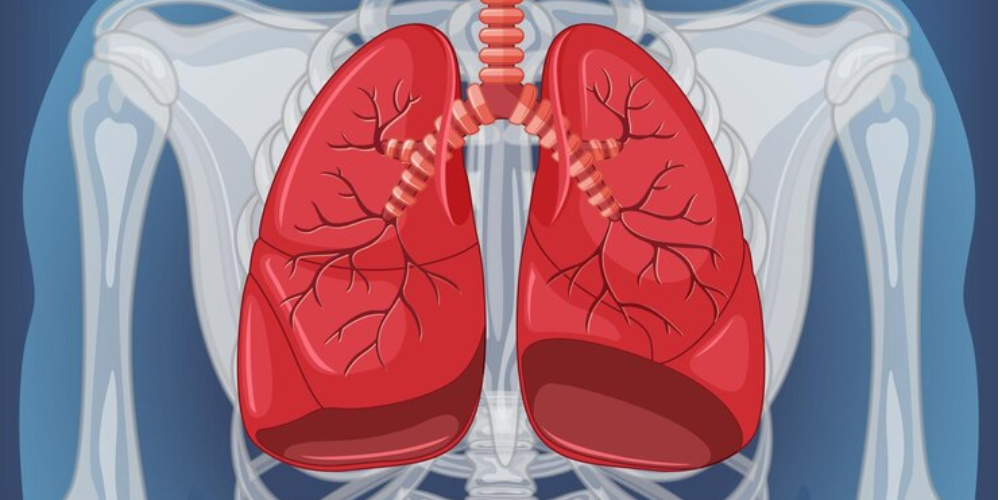Your lungs are more than just organs; they're vital engines that keep you breathing, sustaining life with every inhale and exhale. Understanding the intricate architecture and functions of these crucial organs—from the base to the apex—is key to appreciating their role in your overall health.
Understanding the Lung Anatomy
The lungs, paired and pyramid-shaped, reside within the mediastinum, snugly embracing the heart. Wrapped in a double-layered pleural membrane, they maintain their form and function. Each lung extends from its base, resting on the diaphragm, to its apex where the upper lobes begin.
Structurally, the right lung boasts three lobes—superior, middle, and inferior—while the left lung accommodates two—superior and inferior—making room for the heart with its characteristic cardiac notch.

Freepik | brgfx | The diaphragm, a muscular dome beneath the lungs, contracts and relaxes rhythmically with every breath you take.
- Bronchopulmonary Segments - Within each lobe, these segments ensure efficient oxygenation, receiving blood and air through dedicated channels.
- Diaphragm - A dome-shaped muscle below the lungs, contracting and relaxing with each breath.
- Vagus Nerve - Integral to lung function, influencing airway tone, blood flow, and mucus secretion.
The Functionality of the Lungs
The lungs are vital for respiration, facilitating the exchange of oxygen and carbon dioxide essential for cellular metabolism. Oxygen from inhaled air diffuses into the bloodstream through the alveoli, while carbon dioxide is expelled from the bloodstream into exhaled air.
- Respiratory Process - Air enters via the trachea and travels through bronchi into bronchioles, culminating in alveoli where gas exchange occurs. Oxygenated blood then travels via pulmonary veins to nourish tissues throughout the body.
- Role of the Respiratory Membrane - Gas exchange happens across the respiratory membrane, where alveolar and capillary walls meet, ensuring efficient oxygenation of blood.
Common Lung Diseases
Despite their resilience, lungs are vulnerable to disease. From infections to chronic conditions, understanding risk factors and symptoms is crucial for early detection and prevention.
Lung Cancer - A Menace to Health

Freepik | Quitting smoking is still the best way to prevent lung cancer.
Lung cancer, predominantly linked to tobacco smoke and asbestos exposure, poses a significant threat. Early detection is key, significantly enhancing survival rates. Quitting smoking remains the most effective preventive measure.
Other Lung Disorders
- Acute Respiratory Distress Syndrome (ARDS): Often a consequence of severe infections or trauma, ARDS impairs lung function, impacting oxygenation.
- Chronic Obstructive Pulmonary Disease (COPD): Characterized by progressive airflow limitation, COPD is primarily caused by long-term exposure to irritants like cigarette smoke.
Protecting Your Lung Health

Freepik | Regular exercise boosts lung capacity and improves respiratory function.
Prevention is always better than cure when it comes to lung health. Adopting a few key habits can significantly reduce your risk of respiratory issues:
- Avoid Smoking: The single most important step you can take.
- Limit Exposure to Pollutants: Whether from industrial chemicals or household pollutants, minimizing exposure is crucial.
- Regular Exercise: Enhances lung capacity and overall respiratory function.
- Vaccinations: Flu and pneumonia vaccines can prevent infections that can compromise lung health.
Protecting Your Lungs
Maintaining lung health is paramount for overall well-being. Strategies such as smoking cessation, avoiding environmental pollutants, and regular exercise can mitigate risks and enhance lung function.
In essence, understanding the intricacies of lung anatomy, their pivotal role in oxygenation, and the threats posed by diseases empowers individuals to prioritize lung health. By adopting preventive measures and seeking timely medical intervention, we can safeguard this essential organ and ensure a healthier future.











